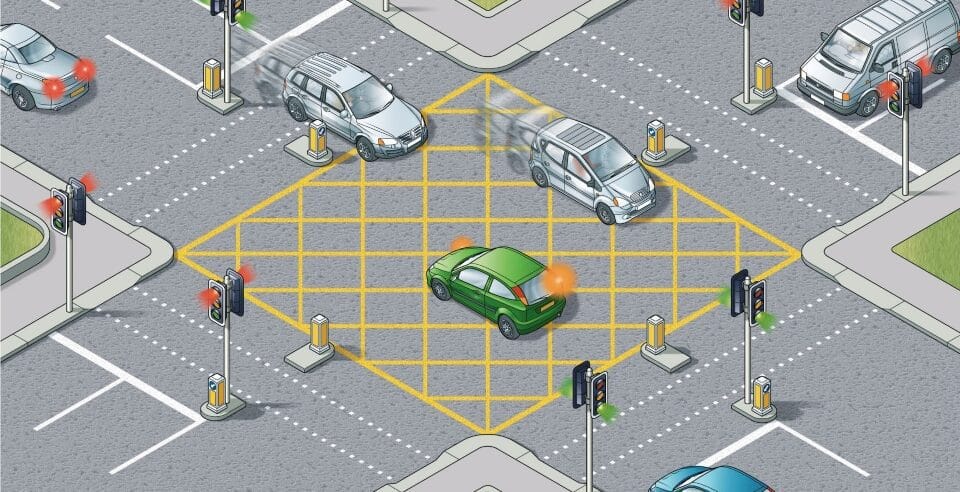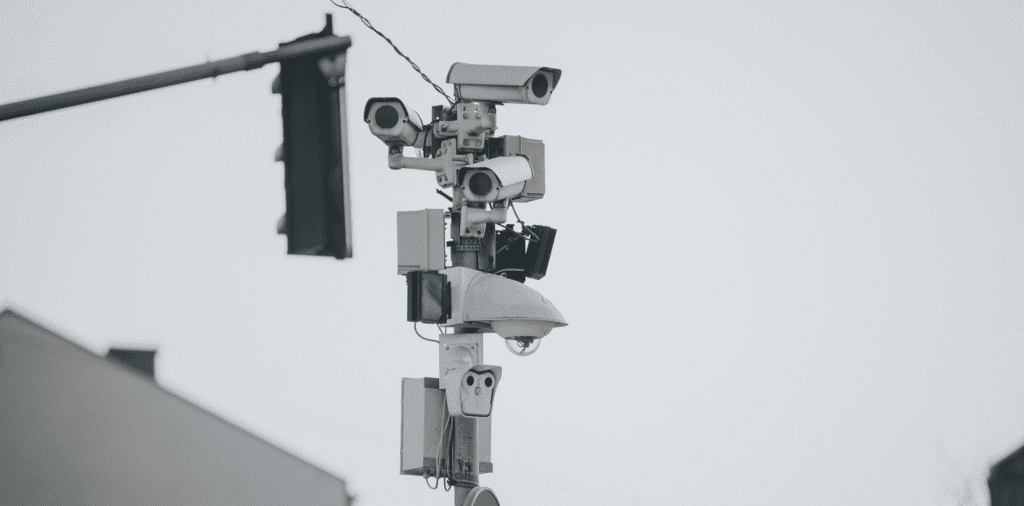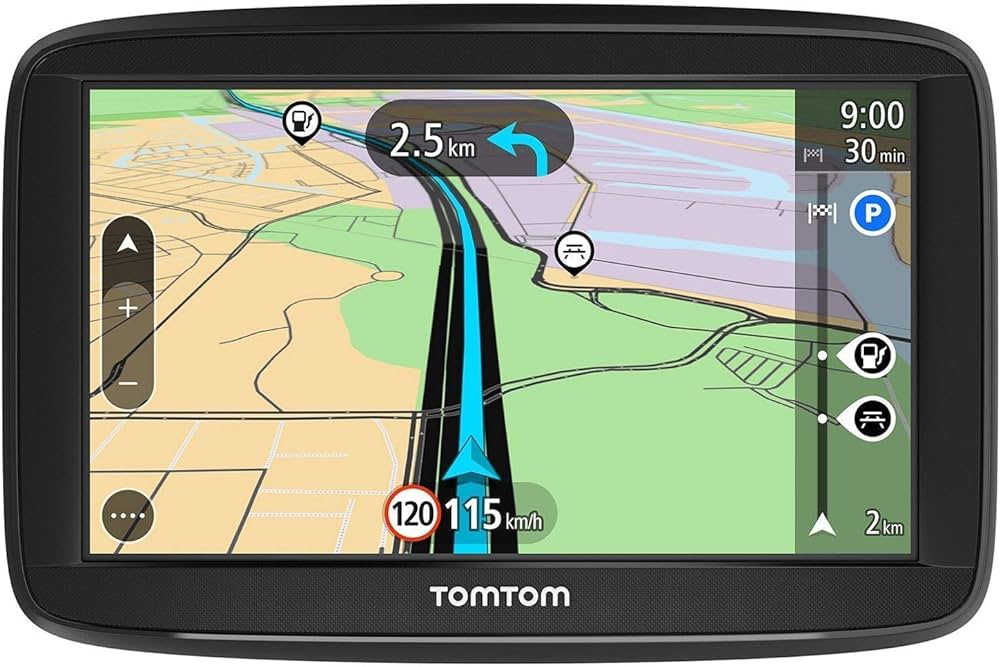
Navigating junctions is an inevitable part of driving, be it T-junctions, crossroads, unmarked junctions, or those controlled by traffic lights. Among these, box junctions often seem daunting, especially for those new to them.
However, understanding a few basic rules can make approaching and crossing these yellow-marked areas much simpler than they appear. Our guide aims to demystify box junctions, highlighting the essential guidelines for a stress-free experience.
What Exactly Is a Box Junction?
Definition of a Box Junction
A box junction is a road traffic control measure designed to prevent congestion and ensure the smooth flow of vehicles through busy intersections.
It is characterised by a grid of criss-cross yellow lines painted on the road surface. These lines form a square or rectangular box, hence the name box junction.

The primary rule governing these areas is that vehicles should not enter the box junction unless their exit is clear, preventing them from becoming obstructed and blocking traffic from other directions.
Purpose of Box Junctions
The purpose of box junctions is to alleviate traffic congestion and reduce gridlock at intersections.
By preventing vehicles from stopping within the marked area, box junctions help ensure that intersections remain clear, allowing traffic to flow more smoothly.
This is particularly important in urban areas with high traffic volumes, where intersections can quickly become congested if vehicles are not able to move freely.
Box junctions also help improve road safety by reducing the likelihood of collisions caused by vehicles blocking each other’s paths.
Locations Where Box Junctions Are Common
Box junctions are commonly found at busy intersections, particularly in urban areas. They are frequently used in city centres where traffic density is high and the risk of congestion is significant.
Additionally, box junctions are often placed at intersections where major roads meet or where complex traffic patterns require additional regulation to maintain smooth flow.
You may also find box junctions at railway level crossings, outside hospitals, and near fire stations, where it is crucial to keep the route clear for emergency vehicles.
Identifying Box Junction Markings
Box junction markings are easily identifiable due to their distinctive yellow criss-cross grid pattern.
The lines are painted in such a way that they form a series of small diamonds within a larger square or rectangle.
The markings are usually bright yellow to ensure they are highly visible to drivers. Signs are often placed before the box junction to alert drivers to the upcoming road marking and remind them of the rules.
Understanding these visual cues is essential for complying with the regulations and avoiding penalties.
Differences Between Box Junctions and Other Road Markings
While box junctions have specific yellow grid markings, other road markings serve different purposes and have different designs.
For example, pedestrian crossings are marked with white stripes and are intended to give priority to pedestrians crossing the road.
Similarly, bus lanes are marked with a solid white line and the word “BUS” painted on the road to indicate lanes reserved for buses.
Unlike box junctions, these markings do not regulate stopping but instead designate specific areas for particular uses. Understanding these differences is crucial for navigating roads safely and legally.
The rule is straightforward: you should not enter the box unless your exit is clear, except when turning right and your way is only obstructed by oncoming traffic.
Where Else Will I Find Yellow Hatchings?
Besides being a feature at busy junctions, yellow box markings are also found in other strategic locations, such as outside fire stations. Here, they play a critical role in keeping exits clear for emergency vehicles.
These markings ensure that fire engines and other emergency vehicles can swiftly and safely enter the roadway when responding to emergencies.
Drivers must respect these markings, understanding their importance for public safety and emergency response efficiency.
Box Junction Rules
When diving into the details of driving regulations, the Highway Code is your go-to resource. Specifically, Rule 174 lays out the guidelines for navigating box junctions. The primary directive here is clear:
Rule 174
Box junctions. These have criss-cross yellow lines painted on the road (see ‘Road markings’). You MUST NOT enter the box until your exit road or lane is clear. However, you may enter the box and wait when you want to turn right, and are only stopped from doing so by oncoming traffic, or by other vehicles waiting to turn right. At signalled roundabouts you MUST NOT enter the box unless you can cross over it completely without stopping.
This rule essentially means that stopping within the box is generally prohibited. However, there’s a notable exception for those intending to turn right. In practical terms, this means that if you’re turning right and are only prevented from doing so due to oncoming traffic or other vehicles waiting to turn, you can wait within the box junction.

It’s important to note that you should only enter the box if your intended path is clear apart from the immediate obstruction.
This exception is designed to prevent traffic build-up at busy junctions, especially where right turns are involved. It ensures that while waiting to turn right, you’re not blocking traffic that can move forward.
However, it’s crucial to be cautious and ensure that by entering the box, you’re not obstructing other traffic flows. Remember, the key aim of these rules is to maintain a smooth flow of traffic and minimise congestion, especially in high-traffic areas.
Turning Left or Travelling Straight On at a Box Junction
When navigating a box junction while turning left or proceeding straight ahead, you must be able to drive through the junction without stopping. This means you should be able to exit the box junction on the other side immediately. As you approach a box junction, be vigilant about the traffic conditions ahead.

If you notice a stationary line of traffic on the road you intend to join, carefully judge whether there’s enough space for your vehicle to completely clear the box junction. Only proceed if you’re certain you won’t have to stop within the box.
In case the traffic is moving, ensure that any vehicles in front of you can fully exit the box junction. Also, confirm that you’ll be able to follow suit without any halt inside the box.
Top Tip for Navigating Yellow Boxes
A helpful analogy for understanding box junctions is to compare them with level crossings. Just as you wouldn’t begin to cross railway tracks unless you were sure your entire car could safely reach the other side, the same principle applies to box junctions.
Entering a box junction without a clear exit could leave you ‘trapped’ in the path of crossing traffic, causing congestion and potential hazards. Always ensure there’s sufficient space and that your exit path is clear before entering the box junction.
This proactive approach not only helps in adhering to the rules but also contributes to smoother traffic flow and safer roads.
Turning Right at a Box Junction
When it comes to handling yellow box junctions while turning right, there’s a specific set of rules to follow. You’re allowed to stop in the box if you’re turning right, but it’s crucial to ensure that your exit road is clear. If you need to wait for a gap in oncoming traffic, it’s permissible to wait within the box until it’s safe to complete your turn.

Position your car by slowly driving into the middle of the box, stopping at the point where you need to begin your right turn. Be cautious not to encroach into the path of oncoming traffic, who will expect you to remain in your lane.
Once there is a safe gap in the oncoming traffic, you can proceed with your right turn and exit the yellow box. If the junction is busy and controlled by traffic lights with a filter system, you may need to wait for a right-turn arrow signal before making your turn.
It’s important to be mindful when following another vehicle turning right into the box. While it’s allowed, you must ensure that you can complete your turn safely without obstructing traffic from other directions.
What if Your Traffic Light Goes Red While You’re Waiting to Turn Right?
In the scenario where your traffic light turns red while you’re waiting in the box to turn right, you’re still allowed to complete your turn. It’s advisable to use the brief interval before the opposing traffic lights turn green to make your turn.
This approach ensures you don’t obstruct traffic or cause delays for other drivers. It’s part of managing box junctions effectively to keep traffic flowing smoothly and safely.
What if I Get Stuck on the Yellow Hatchings?
Finding yourself inadvertently stuck in a box junction can be a challenging situation. It’s not only a violation of driving laws but can also cause significant frustration and inconvenience to other road users.
When you’re stationary in the box, you might obstruct traffic flow, potentially leading to risky manoeuvres by other drivers trying to navigate around you. However, despite our best efforts, mistakes can happen on the road.

If you do get stuck in a box junction, the first step is to stay calm. Panicking can lead to hasty decisions that might worsen the situation. Be highly alert to the traffic around you, as vehicles may approach from various directions. Before moving your vehicle, ensure you have a clear understanding of the traffic movement around you.
Look for an opportunity to clear the junction as safely and quickly as possible, without causing further disruption.
Signal your intentions clearly to other drivers, using your indicators and making eye contact where possible.
If necessary, gesture or communicate to other drivers to seek their cooperation in creating space for you to move out of the box.
Remember, the key to preventing such situations is to always assess whether there’s sufficient space on the other side of the junction before entering. This proactive approach will help avoid getting stuck and ensure smoother traffic flow for everyone.
Will I Get Fined if I Get Stuck in a Box Junction?
If you find yourself stuck in a box junction, there is a significant possibility of receiving a fine. Many busy junctions, particularly those with yellow box markings, are monitored by cameras.
These cameras are designed to capture images of drivers who stop unlawfully within the box. If you’re caught, the likelihood is high that you’ll face a financial penalty.
The amount of the fine varies depending on several factors, including how swiftly you settle the fine and the location where the offence occurred. In London, for instance, you might receive a Fixed Penalty Notice of up to £130. In other parts of the country, the maximum charge is currently around £70.

There’s some criticism surrounding the enforcement of box junction rules. Critics often describe it as a ‘cash cow’ exercise — a means for councils to generate revenue without providing substantial public benefit.
This criticism is particularly vocal in areas where it’s challenging for drivers to discern whether their exit from the box is clear, such as on hills.
Despite varying opinions on the penalties, it’s important to remember that box junctions play a crucial role in maintaining traffic flow.
By adhering to the rules and ensuring you don’t enter a box junction unless your exit is clear (or if turning right and only obstructed by oncoming traffic), you contribute to smoother traffic and avoid potential fines.
Understanding and respecting these rules is key to both avoiding penalties and ensuring efficient traffic management.
Practicing Defensive Driving
Defensive driving is a crucial skill for navigating box junctions safely. This approach involves being aware of potential hazards and anticipating the actions of other road users.
By maintaining a safe distance, adhering to speed limits, and being prepared to stop, you can reduce the risk of entering a box junction without a clear exit. Defensive driving promotes safety not just for you, but for all road users.
Observing Traffic Patterns
Observing traffic patterns can give you valuable insights into the best times to enter a box junction.
Pay attention to peak traffic times, the behaviour of other drivers, and the flow of vehicles through the junction.
By understanding these patterns, you can better time your entry into the junction, ensuring your exit is clear and avoiding unnecessary delays or penalties.
Modern technology can be a great aid in navigating box junctions. GPS systems and traffic apps often provide real-time traffic updates, helping you anticipate congestion and plan your route accordingly.

Some advanced systems can even alert you to upcoming junctions and their rules, giving you more time to prepare. Leveraging these technologies can enhance your awareness and decision-making on the road.
Learning from Mistakes
Learning from mistakes is a vital part of becoming a proficient driver. If you find yourself making errors in box junctions, take the time to understand what went wrong.
Perhaps you misjudged the traffic flow or didn’t notice a blockage ahead. By identifying these mistakes, you can adjust your driving habits and avoid repeating them in the future. Continuous improvement is key to safe and effective driving.
Staying Updated with Road Rules and Regulations
Traffic laws and regulations can change, so it’s important to stay updated with road rules and regulations.
This ensures that you are always aware of the current guidelines for box junctions and other traffic control measures.
Regularly reviewing the Highway Code and attending refresher courses if necessary can keep your knowledge current and help you navigate the roads safely and legally.
By applying these tips and strategies, you can navigate box junctions more safely and confidently, contributing to smoother traffic flow and enhancing overall road safety.
Box Junction Breakdown
Navigating box junctions effectively is a crucial aspect of driving, especially in busy traffic conditions. Box junctions are easily identifiable by their distinctive criss-crossed yellow lines on the road surface. Here are some key points to remember for a smooth and lawful passage through these junctions:
Exit Path Assessment: Always ensure your path to exit the box junction is clear before you enter, regardless of your intended direction. This is a fundamental rule for all movements through a box junction.
Stopping Before Entry: If your exit route is not clear, you must stop before the yellow lines. This prevents you from being stranded in the middle of the junction and obstructing other traffic.
Spacing: Maintain sufficient space behind the vehicle in front of you. This gives you a better view to assess whether you can completely clear the box without stopping.
Turning Right: When turning right, approach the junction slowly. Position your vehicle in the box, but wait on the hatchings until there’s a safe gap in oncoming traffic to complete your turn. Remember, it’s permissible to wait in the box when turning right, as long as your exit path is only obstructed by oncoming traffic.

Following these guidelines helps prevent congestion and ensures smooth traffic flow. Remember, box junctions are designed to keep traffic moving and prevent blockages at busy intersections. By adhering to these rules, you contribute to a more efficient and safer road environment for everyone.
Frequently asked questions
A box junction is a traffic control measure marked by criss-cross yellow lines forming a square or rectangle on the road. It is designed to prevent congestion at busy intersections by ensuring vehicles do not block the junction.
The primary rule is that you must not enter a box junction unless your exit is clear.
This means you should only proceed into the junction if there is enough space on the other side for your vehicle to leave without stopping within the yellow grid.
Box junctions are important because they help reduce traffic congestion and improve safety at intersections.
By preventing vehicles from blocking the junction, they ensure smoother traffic flow and reduce the risk of accidents.
Box junctions are commonly found at busy intersections in urban areas, city centres, and places where major roads intersect.
They are also used at railway crossings, outside hospitals, and near fire stations to keep routes clear for emergency vehicles.
You can identify a box junction by its distinctive yellow criss-cross grid markings on the road surface.
These markings are highly visible and usually accompanied by signs indicating the presence of the junction.
If you get stuck in a box junction, stay calm and try to move out of the way as soon as possible without causing further disruption.
Check traffic flow and use signals to communicate with other drivers.
Yes, entering a box junction without a clear exit is a traffic offence. You could receive a fine and points on your driving licence if caught by a traffic officer or a camera.
You can enter a box junction when turning right if you are stopped by oncoming traffic or other vehicles waiting to turn right.
However, you must ensure that there is a clear exit once the way is clear.
Blocking a box junction can result in fines and points on your driving licence.
Repeated offences or causing significant traffic disruption could lead to more severe penalties.
During heavy traffic, avoid entering a box junction unless you are sure your exit is clear.
It’s better to wait until traffic moves and you can safely cross without stopping within the junction.
Yes, box junction rules apply to all road users, including cyclists. Cyclists must also ensure their exit is clear before entering the junction to avoid blocking traffic.
If the lights go red while you’re in a box junction, stay calm and wait for a safe opportunity to exit the junction.
Avoid sudden movements and communicate your intentions to other drivers if necessary.
Yes, box junctions are used in many countries around the world, particularly in urban areas with high traffic volumes. They serve the same purpose of reducing congestion and improving traffic flow.
Technology such as GPS systems and traffic apps can provide real-time traffic updates, helping you anticipate congestion and plan your route. Some advanced systems alert you to upcoming box junctions and their rules.
Key tips include:
- Practicing defensive driving
- Observing traffic patterns
- Using technology for navigation
- Learning from mistakes
Staying updated with road rules and regulations. Always ensure your exit is clear before entering a box junction.



